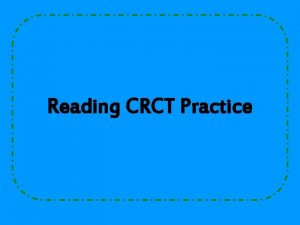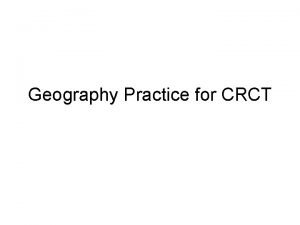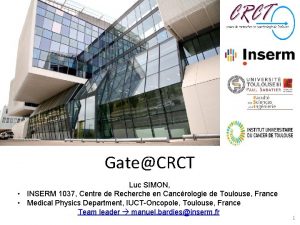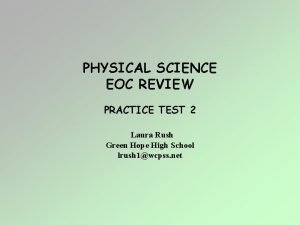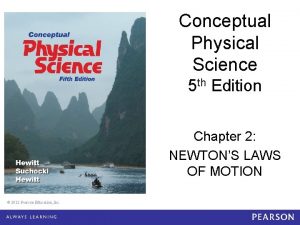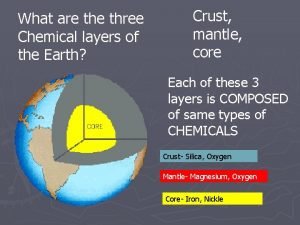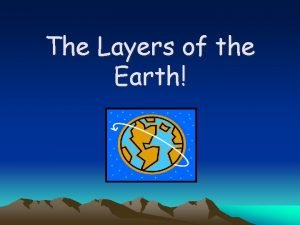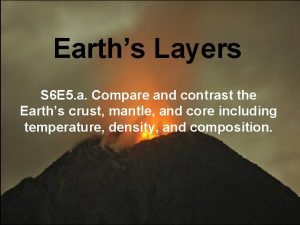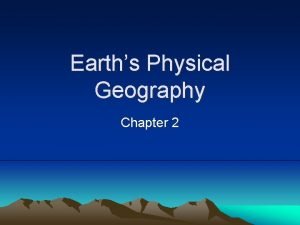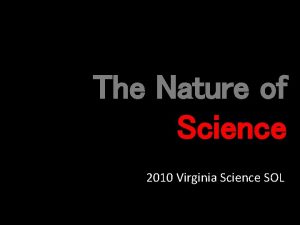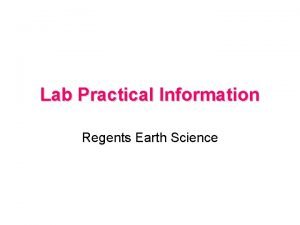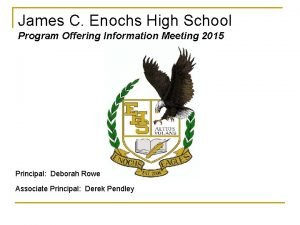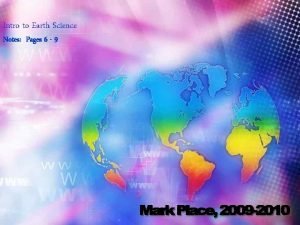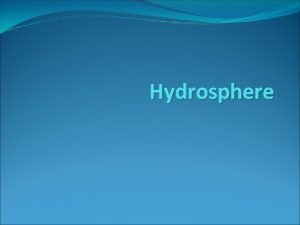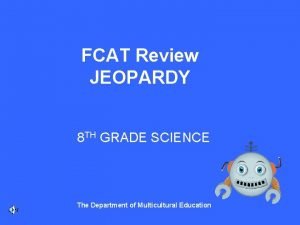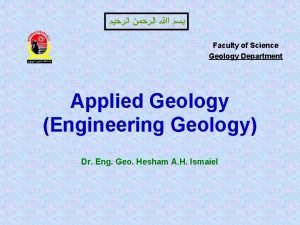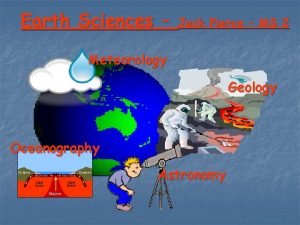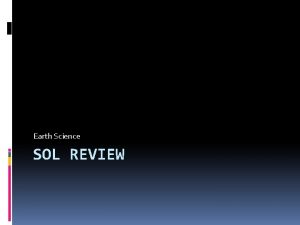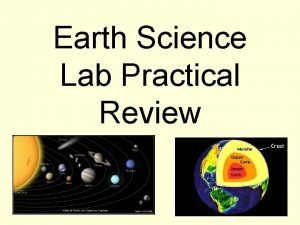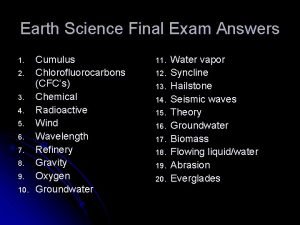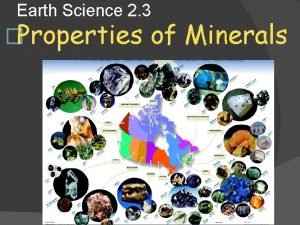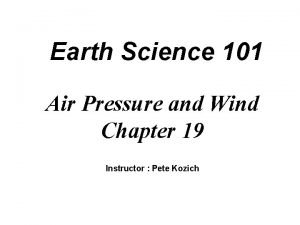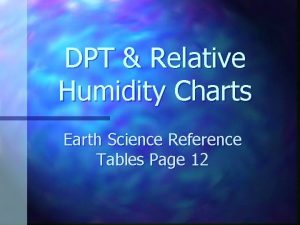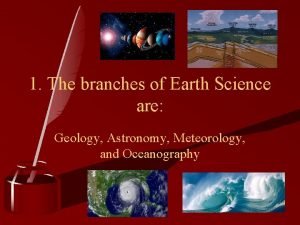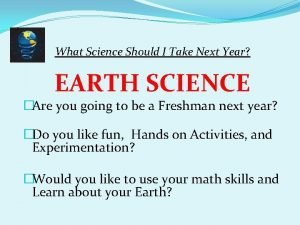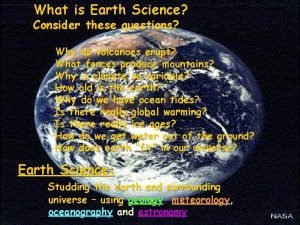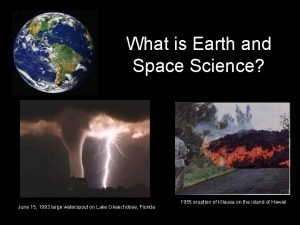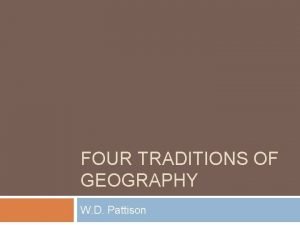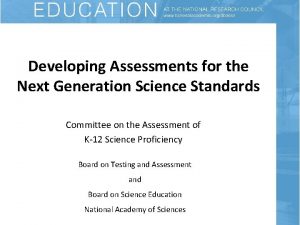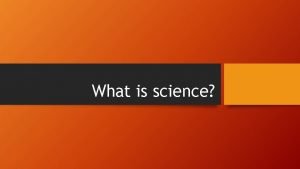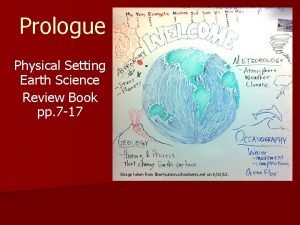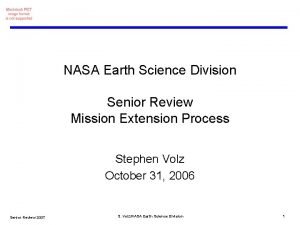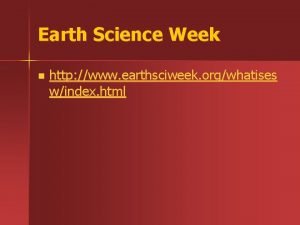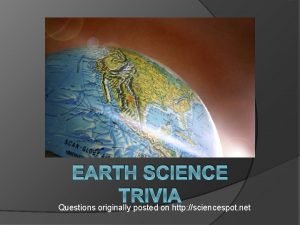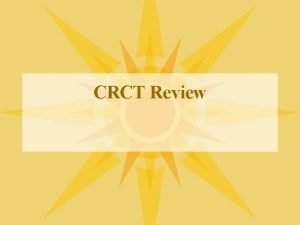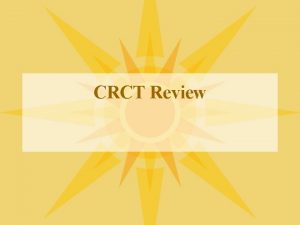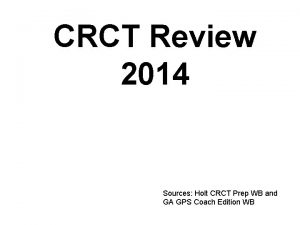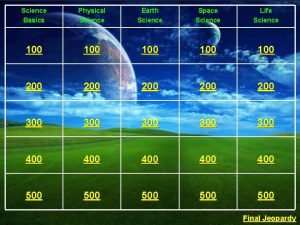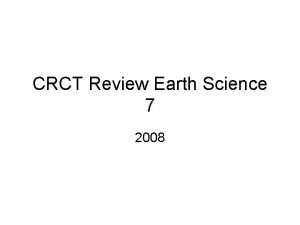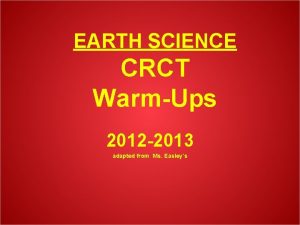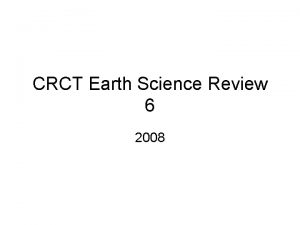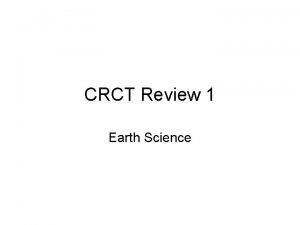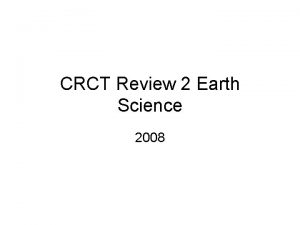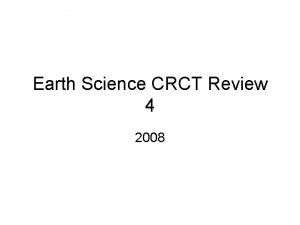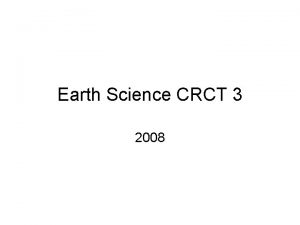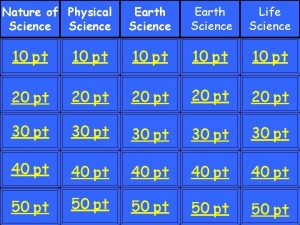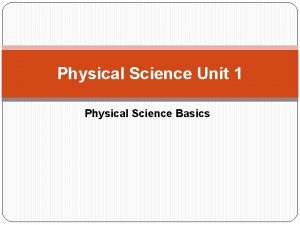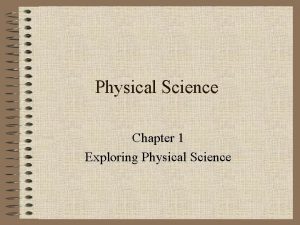Earth Science CRCT Practice 1 1 A Physical

















































- Slides: 49

Earth Science CRCT Practice #1

1 A. Physical weathering Frost wedging is an example of… Water freezes and Expands (Physical movement) For chemical : Must have the word Acid or must change the rock to something else

2 B. 15 Number of hours doing dishes

3 C. Low pressure and low density Properties of warm air Warm Cold Lighter Heavier Less Dense More Dense Less Pressure More Pressure

4 D. 5, 4, 3, 2, 1 From oldest to the youngest Youngest (top) Oldest (bottom)

5 A. New moon Solar Eclipse Full moon Block the SUN New moon

6 A. Top Soil Most Fertile soil Humus Top Soil Humus

7 D. Deep within the Earth Metamorphic rocks most likely forms Heat and Pressure Heat and pressure is usually deep in the Earth

8 C. The mountain was once below water Seashell fossil discovered on top of a mountain, what is a good scientific reason? Mountain Seashells (sea animals) normally live in oceans. Mountain are formed on land in the oceans

9 B. 14 How many day between new and full moon ? 7 days start 0 days 14 days 29 days Full New 21 days

10 D. Z At which point are the oldest rocks? New Old

11 D. One year (365 ¼ days) One revolution of Earth around the SUN equal to Spring Summer Sun Fall Winter 1 year

12 C. The length of the day would increase If Earth’s rotation (spin) slowed I would take more time to make one spin Day and Night would take longer. We would see longer days and longer nights.

13 A. A Which layer contains the humus? Humus Top Soil, layer A

14 C. Outer Core Which layer is made up of liquid Iron and Nickel? Solid Iron Liquid Iron Molten Rock Solid Rock

15 C. Inner core, outer core, mantle, crust Highest to the lowest pressures Highest Pressure Lowest Pressure

16 B. Drought What could happen during long period of low precipitation? Precipitation = rain, snow, sleet, hail… mostly RAIN Low Precipitation = Very little rain = Dry Drought = little or no rain

17 A. Y, W, X, Z Soil horizons: the correct sequence 2 Decaying organic matter Silt and Clay Rock fragments Bedrock 3 1 4

18 B. Water Renewable resource Things that can be used over and over. Things that will not run out Trees Water Sun Wind.

19 C. Continental Slope What is letter “Y” ? Continental SHELF Continental RISE Continental SLOPE

20 D. Continental drift theory What theory do the maps support? PANGEA ( Supercontinent ) The continents are moving apart (at the mid-ocean ridges)

21 D. Winter If It is SUMMER in the NORTH, then south is … Summer Winter

22 C. Choice “C” How much of the Earth’s SURFACE is COVERED with water Equal A C B D About 2/3 Too much land Too much water

23 C. Jupiter Earth 1 moon Mars 2 moons Jupiter Pluto 30 -70 moons 3 moons Which Planet is it Gas Giants ( Jupiter, Saturn, Uranus, & Neptune) All have A LOT of moons.

24 D. Coal Which is NON-renewable ? Things that cannot be replaced. Once used, it is gone. Wind /Air Water Soil Coal Renewable CANNOT Things that are burned are NOT renewable

25 D. The moon Object that is responsible for the tides on Earth L H H H L L L H

26 C. A day would be longer Time it took the Earth to rotate increased Time increased = It took longer to rotate It took more time to spin It did not say it took longer to go around the Sun

27 D. 40 km/h What would produce the highest waves Strongest winds

28 B. Gravity What is the force at “X” ? Gravity Without this force, The planet would fly away Gravity holds the universe together

29 B. Which illustration is rotation Rotation = Spin Rotation Revolution

30 What is the moon phase for the following alignment A B C D

31 D. The Earth Which object is the smallest. Universe is the BIGGEST SUN Earth Galaxy There are BILLIONS of galaxies in the Universe

32 B. Continental plate is colliding with another continental plate What is occurring in the illustration ? Building mountains Collision Continent The picture does not show any ocean information

33 D. The moon would fly away from earth What would happen to the moon if gravity is no more gravity? Without gravity, The moon would fly away

34 C. 70 % What Percent of the Earth is covered by water? About 70%

35 C. Precipitation What is occurring at point Y? Condensation Evaporation Precipitation

36 D. Part solid and part liquid Earth Core is made of: There are 2 cores ( Inner core and Outer core ) Solid Iron Liquid Iron Molten Rock Solid Rock

37 B. Mantel Layer marked “X” Inner core Outer core Mantel Crust

38 A. Which is a crescent moon? A B C D Crescent looks like a “C” White part is what you see, not the black.

39 C. More dense than the air rising over the land Air over the sea during daytime… Warm, less dense Cool, more dense

40 D. Magma Molten rock under Earth’s surface Molten = Flows like thick syrup A. Sedimentary rock Solid rock B. Metamorphic rock Solid rock C. Lava D. Magma Molten, outside Molten under Earth

41 A. Hurricane What type of storm is this? Thunderstorm Land Tornado Land Blizzard Land Hurricane Ocean

42 C. Eclipse of the moon Block the moon A C B D

43 A. Evaporation What process moves water into the atmosphere Move to the sky Evaporation

44 D. Collision of two continental plates Continental (land) plates collide Subduction, sliding under A C B D Divergent Collision of two plates Did not say sliding under

45 A. More dense and has higher pressure Compared to warm air, cool air is: Warm Cold Lighter Heavier Less Dense More Dense Less Pressure More Pressure

46 D. Geocentric What theory does the illustration represent? Earth is at the center Geocentric ( Earth centered ) Heliocentric ( Sun centered )

47 A. The changing seasons Earth’s tilt is responsible for… Reason for the season Tilt of the Earth

48 D. Oceanic plate is sliding under a continental plate What event is occurring in the illustration? Land = Continent Ocean plate is sinking (sliding) under a continental plate
 Crct practice
Crct practice What country
What country Emodles
Emodles Physical science eoc practice test
Physical science eoc practice test Conceptual physical science practice sheet chapter 2
Conceptual physical science practice sheet chapter 2 Natural science branches
Natural science branches Natural science vs physical science
Natural science vs physical science What's your favorite lesson
What's your favorite lesson Different layers of earth
Different layers of earth How many layers are there in the earth
How many layers are there in the earth What are earth's physical layers
What are earth's physical layers Lithosphere
Lithosphere Earth physical features
Earth physical features Earth's physical geography chapter 2
Earth's physical geography chapter 2 Earths physical features
Earths physical features Modern earth science
Modern earth science Earth science sol 2010
Earth science sol 2010 Earth science lab practical
Earth science lab practical Earth science reference table page 8 and 9
Earth science reference table page 8 and 9 Earth science lab practical
Earth science lab practical Earth science grade 9
Earth science grade 9 Dynamic equilibrium earth science
Dynamic equilibrium earth science Hydrosphere includes all the
Hydrosphere includes all the Fcat science 8th grade
Fcat science 8th grade Geology earth science definition
Geology earth science definition Earth science final exam review
Earth science final exam review Earth science meaning
Earth science meaning Geology earth science definition
Geology earth science definition Earth science sol review
Earth science sol review Earth science vs geology
Earth science vs geology Earth science sol review
Earth science sol review Earth science lab practical
Earth science lab practical Earth science semester 2 final exam answers
Earth science semester 2 final exam answers Rock cleavage
Rock cleavage Mercury barometer
Mercury barometer Earth science reference table relative humidity
Earth science reference table relative humidity Branches of earth science
Branches of earth science 282 ways to pass the earth science regents
282 ways to pass the earth science regents Earth science vs geology
Earth science vs geology Honors earth science
Honors earth science Why study earth science
Why study earth science Space scientific definition
Space scientific definition W.d. pattison
W.d. pattison Plate earth science
Plate earth science The sun warms the earth unevenly science or pseudoscience
The sun warms the earth unevenly science or pseudoscience Earth science review book
Earth science review book Earth science
Earth science Earth science week
Earth science week Earth science trivia questions
Earth science trivia questions Earth science prologue review
Earth science prologue review
